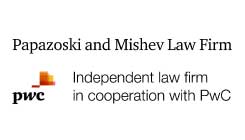At 30 years old, the Belarusian legal market is still relatively young. The end of the 1980s and early 1990s was a time of new economic relations; the first non-state companies appeared and the first foreign investors entered the market. These new economic conditions required lawyers focused on economic law, and soon the first Belarusian private law firms and individual practitioners appeared. Some of them (including the Law Laboratory, which was founded in 1990 by me and my colleague Natalia Kozyrenko and which later transformed into Vlasova and Partners) remain the “top dogs” on the Belarusian market today.
The development of the legal services market followed the formation and development of business in Belarus, and by 2010 there were about 400 law firms and individual practitioners in the country. Then, as now, Minsk offered the highest density of lawyers and law firms, with far fewer in the regions.
Also by 2010, the large national law firms, having created a certain image and gained prestige among colleagues, partners, and clients, not only cared about the quality of the legal services they provided, but also had begun paying more and more attention to issues of professional ethics and corporate culture. Partners participated in the law-making process in Belarus and advised on various national and international projects and programs. Many of their clients were multi-national companies and foreign investors requiring a high level of expertise in their external counsel (which were, in turn, required to offer ongoing trainings, seminars, and foreign internships to younger employees), and lawyers able to provide legal services in their own language. Specialization in the more complex and less developed areas of legislation became the hallmark of the activity of these law firms.
Then, as now, International law firms were not represented in Belarus. Instead, the largest UK and US-based firms chose Belarusian leaders as their permanent partners for their projects in Belarus. Since the early 2000’s these national leaders have been ranked by international publications.
The second-largest group of law firms, staffed on average by five to seven lawyers, had by and large worked in the market between two and eight years, serving mainly small and medium businesses. The third group consisted of law firms engaged mainly in providing certain types of standardized services, such as registration/liquidation of companies, licensing, and so on.
Also by 2010, a two-tiered legal market had been formed: there were advocates, who served mainly individuals, and there were business lawyers, who advised companies on business activities.
In 2013, the legal system in Belarus was reformed. As a result, in April 2013, business lawyers lost the right to represent their clients in court. Thus, partners of leading law firms were required to become advocates and to establish law offices on that basis in their firms.
Currently, there are more than 2000 advocates in Belarus. There are about 160 state legal consultations and 70 law offices and about 260 individual practitioners. About 66% of Belarusian lawyers are women.
The main features of the modern legal market in Belarus are the following: The Belarusian legal market is still in its growth stage. The main brakes to its development are the political and economic risks reflected in the low activity of foreign investors in Belarus, including limited privatization, under-developed financial instruments and financial market, and so on. About ten Belarusian law firms (including the local offices of Baltic law firms) form the main driving lever of the Belarusian market, covering up to 90% of international, complex, high-margin projects. Leading Belarusian lawyers are actively involved in international professional networking; they participate in international conferences around the world and are members of the IBA and other associations and networks. The main trend in the last two years in the law firm market is a strengthening of the specialization of main players in different market segments. In the past few years, the market has somewhat consolidated, as there have been several mergers of leading market players (ours was among the first, as Vlasova, Mikhel & Partners resulted from the 2007 merger of Vlasova & Partners with Mikhel & Partners). Increased respect for the confidentiality of information received from clients, liability insurance, and implementation of quality management systems. Strengthening the role of marketing in law firms: commitment to the development of brands, clearer positioning, project management, active use of CRM systems, and digital marketing. Paying attention to human resources: developing recruitment and retention systems and the need to train and promote personnel and grow partners. The interaction of lawyers and business is growing, with lawyers recognizing the need to stay close to clients, use familiar and understandable language, enter into an open dialogue with authorities, and take part in the preparation of normative legal acts. Naturally, the growing competition between large law firms (in Belarus, a law firm of 20-25 lawyers is considered large) and the rise of smaller players makes everyone more scrupulous and, if you like, careful of their clients.
In general, the trends in the development of the legal market are such that the success of a law firm is largely determined by the quality of the service it provides. This circumstance justifies optimism for the further development of fair competition between professional lawyers, on one hand, and the trust of clients in their independent legal advisers on the other.
By Liliya Vlasova, Senior Partner, Vlasova Mikhel & Partners, Belarus
This Article was originally published in Issue 4.8 of the CEE Legal Matters Magazine. If you would like to receive a hard copy of the magazine, you can subscribe here.





















